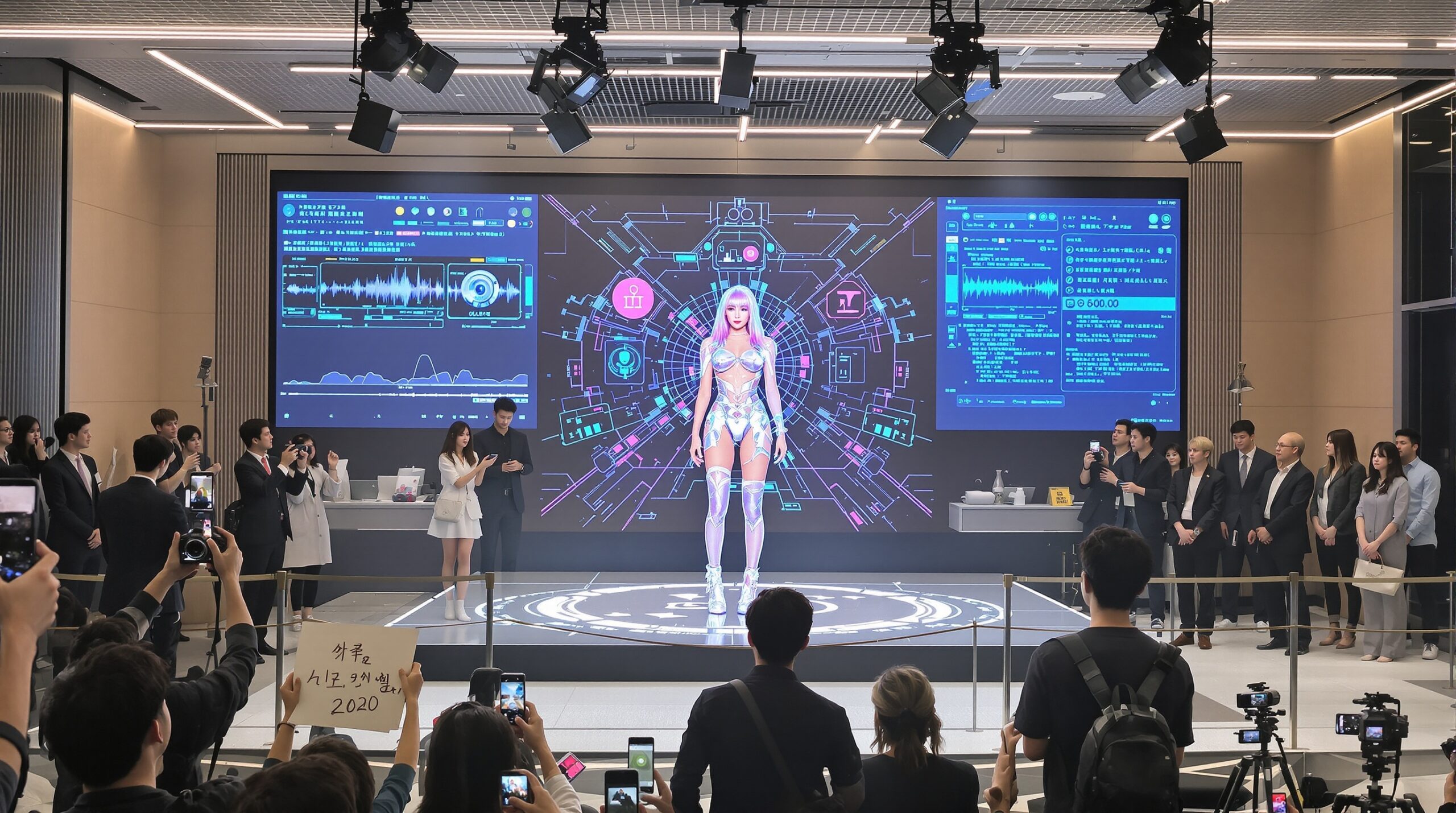A New Contest for Cultural Ground
K-pop labels are racing to build virtual idols powered by AI and motion capture. Executives see new revenue, consistent availability, and controllable narratives. Fans, however, are testing limits of AI-generated stardom across platforms. Their reactions shape strategies, product design, and regulations in real time. The contest now defines how the industry imagines its next decade. Technology and culture now collide in a high-stakes experiment watched by global media.
Origins and Momentum
Virtual pop is not new, but the K-pop system scales it fast. Riot Games introduced K/DA in 2018, blending animation, vocals, and idol marketing. SM Entertainment pushed hybrid storytelling through aespa’s avatars and the wider SM Culture Universe. Agencies also nurtured standalone virtual humans like Rozy and APOKI for brand deals. These experiments primed fans for today’s AI-native idol projects. South Korea’s trainee system provides storylines and cadence that virtual acts readily mimic.
The Technology Stack Behind Virtual Idols
The new wave relies on a layered technology stack. Studios use real-time engines, motion capture, and facial tracking to puppeteer performances. Voice models synthesize consistent singing and speech across languages while preserving character identity. Generative tools now accelerate choreography previews, styling, and background assets. The pipeline reduces downtime and lets teams update content at algorithmic speed. Teams version-control assets like software, enabling rapid A/B tests across markets.
The Leading Projects and What They Prove
Kakao Entertainment backs MAVE:, a four-member virtual girl group built by metaverse subsidiary teams. MAVE: debuted in 2023 with polished visuals, multilingual lyrics, and intensive motion capture. VLAST runs PLAVE, a virtual boy band whose livestreams drive tight-knit fandom rituals. Deep Studio’s SUPERKIND mixes human idols with the AI member SAEJIN to test hybrid identity. Pulse9’s ETERN!TY develops members through face synthesis and curated voice acting. Each project markets distinct philosophies about identity, embodiment, and live presence.
Why Labels Chase Virtual Idols
Labels pursue virtual idols for diversification, scalability, and control. Virtual performers never age, miss rehearsals, or violate clauses, executives often argue. Teams can schedule 24/7 content without travel, visas, or recovery time. IP remains owned, enabling flexible licensing across games, fashion, and education. These advantages look attractive against volatile trainee pipelines and rising production costs. Shareholders also see reduced scandal risk and easier crisis management.
Fandom Behavior Is the Deciding Factor
Fans still decide whether virtual idols become cultural fixtures or short-lived novelties. Communities dissect lore, technology, and voice choices with unprecedented scrutiny. They reward transparency about actors, training data, and live performance methods. They also punish gimmicks, inconsistent voices, and exploitative monetization. The tension pushes labels to iterate faster and open clearer communication channels. That feedback loop becomes a live laboratory for entertainment design.
Engagement Playbooks That Actually Work
PLAVE built loyalty through frequent livestreams, candid banter, and responsive Discord-like communities. Fans treat members as real-time companions, not static CGI models. MAVE: emphasized cinematic lore, choreography precision, and high-end visuals for global virality. SUPERKIND invited fans to debate hybrid membership rules and future recruitments. These playbooks show multiple paths toward sticky engagement. These tactics signal that personality work still outweighs pure technical novelty.
How the Big Four Are Positioning
Major houses are moving cautiously while testing core components. HYBE acquired voice-synthesis company Supertone and showcased multilingual singing with MIDNATT. SM extends its metaverse narrative through aespa, Nævis, and new virtual cameos. JYP partners with platforms like ZEPETO for auditions and avatar fan events. YG explores collaborations while monitoring sustainability and brand safety risks. Their timelines suggest pilots today, with fuller integrations arriving gradually.
Business Models and Revenue Expansion
Virtual idols mirror human idol monetization, then expand it. Revenue comes from music sales, streaming, virtual concerts, and character licensing. Additional income includes branded AR filters, digital fashion, and synthetic voice cameos. Production stays capital-intensive, but marginal distribution costs remain low. Charts and platforms increasingly verify ownership and mark synthetic elements when policies require. Emerging tools also personalize merchandise bundles using fan behavior data.
Creative Labor Still Powers the Illusion
Virtual idols still require human labor across design, animation, vocals, and community. Behind each character, teams of actors, writers, and engineers craft the illusion. Credit and pay remain flashpoints, especially for anonymous voice talent. Some groups now publish staff credits to build trust and accountability. Clear attribution also deters rumors about full automation replacing workers. Unions and advocacy groups monitor conditions for performers behind the avatars.
Ethics, Rights, and Regulation Shape Decisions
Legal frameworks now shape product design as much as art direction. Korea criminalizes malicious deepfakes and debates disclosure rules for synthetic media. The EU AI Act requires transparent labeling for AI-generated content in many contexts. Rights holders increasingly license voices and likenesses with explicit AI clauses. Labels also draft policies for dataset provenance and artist opt-outs. Clear labels help audiences choose while protecting creative freedoms.
Performance, Touring, and Live Presence
Touring evolves as mixed-reality venues and XR stages mature. Companies stage concerts with real-time avatars, hologram screens, and synchronized lightsticks. Ticketing spans physical seats, VR passes, and shoppable livestreams. Venues appreciate repeatable shows without travel restrictions or weather risks. Fans still crave spontaneity, so teams design improvisation systems for interactions. Producers treat shows as software, shipping updates between tour stops.
Obstacles, Backlash, and Course Corrections
Skeptics call virtual idols a cost-cutting scheme that erodes artist welfare. Some fans fear replacements for trainees and diminishing chances for human debuts. Others reject AI voices as uncanny or culturally inauthentic. Missteps around disclosures can trigger boycotts and platform takedowns. Transparent roadmaps and participatory decisions ease much of the fear. Constructive skepticism often improves systems before mainstream exposure.
Outlook: Trust Will Decide the Winners
The race will intensify as platforms reward constant output and global reach. K-pop’s system excels at training, packaging, and iteration, which benefits virtual formats. Fans remain the final editors, shaping which experiments endure. Labels that listen, adapt, and credit humans will lead this frontier. The future idol may be virtual, but the relationship must still feel real. Success will hinge on trust, not just technical prowess or marketing.


